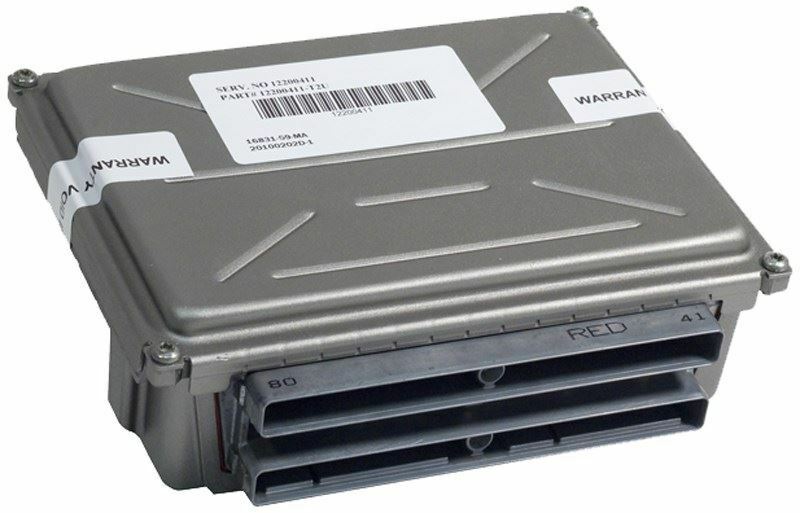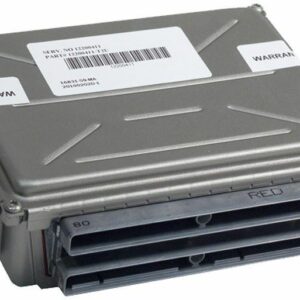Restore Your Vehicle’s Brain and Get Back on the Road
If you’re dealing with frustrating issues like your 2000 Pontiac Grand Am stalling, running rough, or simply refusing to start, the problem often lies with a failing Powertrain Control Module (PCM). As a technician with over two decades of experience, I’ve seen firsthand how a faulty engine computer can cause a cascade of baffling problems. This isn’t just a part; it’s the central command center for your engine’s performance, fuel economy, and emissions. This listing is for a reliable, used OEM engine computer, part number 09380717, that offers a dependable and cost-effective solution.
The biggest hurdle with replacing a PCM is the programming. A blank module won’t work. That’s why we take care of the most critical step for you. Before this module ships, we will flash it with the latest official GM software updates, perfectly matched to your vehicle using your VIN. This ensures that when you receive your 2000 Grand Am PCM, it’s ready for installation, saving you a costly trip to the dealership and their programming fees.
Case Study: A Tricky Diagnosis
I remember a 2000 Grand Am with the 3.4L V6 that came into the shop with an intermittent no-start condition. The owner had already replaced the battery and starter. We checked fuel pressure and spark—both were fine when it decided to run. The challenge was that it would only act up after being driven for 30+ minutes and then sitting for a short while. After hooking up a scan tool and monitoring live data, we noticed the PCM would stop communicating right before the no-start occurred. A classic case of heat-soak causing an internal failure in the module. Swapping in a correctly programmed PCM like this one solved the problem instantly. These intermittent issues are often the clearest sign of a failing computer.
Common Signs of a Failing PCM
If the main computer is failing, your car will let you know. Keep an eye out for these common symptoms, which often point directly to a needed replacement.
- ✔ Check Engine Light is on with codes like P0601 (Internal Control Module Memory Check Sum Error) or P0606 (PCM Processor Fault).
- ✔ The engine cranks but refuses to start.
- ✔ Unexplained stalling or rough idling.
- ✔ A noticeable decrease in fuel efficiency.
- ✔ The transmission shifts erratically or harshly.
- ✔ Communication errors with your OBD-II scan tool.
A Straightforward Guide to Installation
Installing your replacement 2000 Grand Am PCM is a manageable job for a DIYer. The key is taking your time and following the proper procedure. Since we’ve handled the programming, you just need to perform the physical swap and a simple security relearn.
- Safety First: Always disconnect the negative terminal from your vehicle’s battery and wait at least 15 minutes for the system capacitors to discharge.
- Locate the Module: On the 2000 Grand Am, the PCM is typically found behind the center of the dashboard. In other compatible vehicles, it may be in the engine compartment. Refer to a service manual for your specific model if you’re unsure.
- Disconnect and Remove: Carefully unplug the wiring harness connectors. They have locking tabs that need to be released. Once disconnected, unbolt the old module from its mounting bracket and remove it.
- Install the New PCM: Mount the new module in place and securely reconnect the wiring harnesses. Ensure they click into place.
- Reconnect the Battery: Reattach the negative battery terminal.
- Perform Security Relearn: Most GM vehicles of this era require a simple key-cycle relearn procedure to sync the new PCM with your vehicle’s anti-theft system. This usually involves turning the key to the ‘ON’ position for 10-15 minutes, then ‘OFF’, and repeating two more times before starting the engine. Instructions for this can be easily found online for your specific model.
Verified Vehicle Compatibility
This module, part number 09380717, is a direct replacement for a wide range of General Motors vehicles. Please verify your original part number or consult the list below to ensure proper fitment. This is a crucial step for a successful repair.
BONNEVILLE 00-01 (LH engine compartment, check ID)
MONTANA 00 (LH engine compartment)
GRAND AM 00 (LH center dash, 3.4L)
REGAL 00-02 (LH engine compartment, ID 9380717)
ALERO 00 (LH center dash, 3.4L)
FIREBIRD 00-02 (Behind RH strut tower, 3.8L, check ID)
LUMINA CAR 00 (LH engine compartment)
TRANS SPORT 00 (Canada, LH front engine compartment)
SILHOUETTE 00 (LH engine compartment)
GRAND PRIX 00 (LH engine compartment, 3.1L or 3.8L)
PARK AVENUE 00 (LH front engine compartment)
VENTURE 00 (LH engine compartment)
CAMARO 00-02 (Behind RH strut tower, 3.8L, check ID)
MALIBU 00 (LH dash)
Choosing this pre-programmed 2000 Grand Am PCM is the smart way to solve complex electronic issues, restore your vehicle’s reliability, and save significant money compared to dealership alternatives.
Frequently Asked Questions
Do I need to do anything after I purchase?
Yes. After your purchase, you must send us your vehicle’s 17-digit VIN. We cannot program and ship the module without it. This ensures the computer is perfectly matched to your car’s factory specifications.
Is this part new?
No, this is a high-quality, tested, and fully functional used part sourced from a salvaged vehicle. This allows us to provide a reliable and affordable solution for your repair needs.
Will I need a mechanic to install this?
While professional installation is always an option, this part is designed for straightforward installation for those with some DIY experience. Since the programming is done, the main tasks are the physical swap and a simple security relearn procedure that does not require special tools.
What if my original part number is different?
It is critical to match the part number 09380717 or confirm compatibility through our fitment list. While some part numbers are interchangeable, using the wrong one can cause system malfunctions. If you’re unsure, please contact us with your VIN before ordering.
What is a security relearn?
It’s a simple procedure that syncs the new PCM to your car’s anti-theft system, allowing the engine to start. For most GM vehicles of this era, it involves cycling the ignition key and waiting for a set period. It’s a necessary final step after installation.



